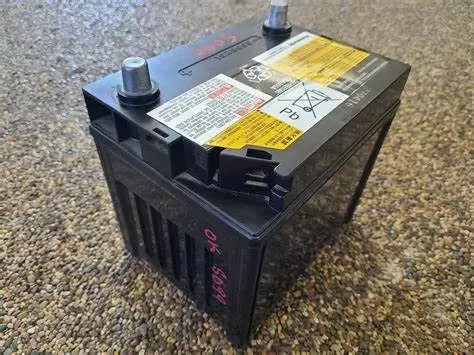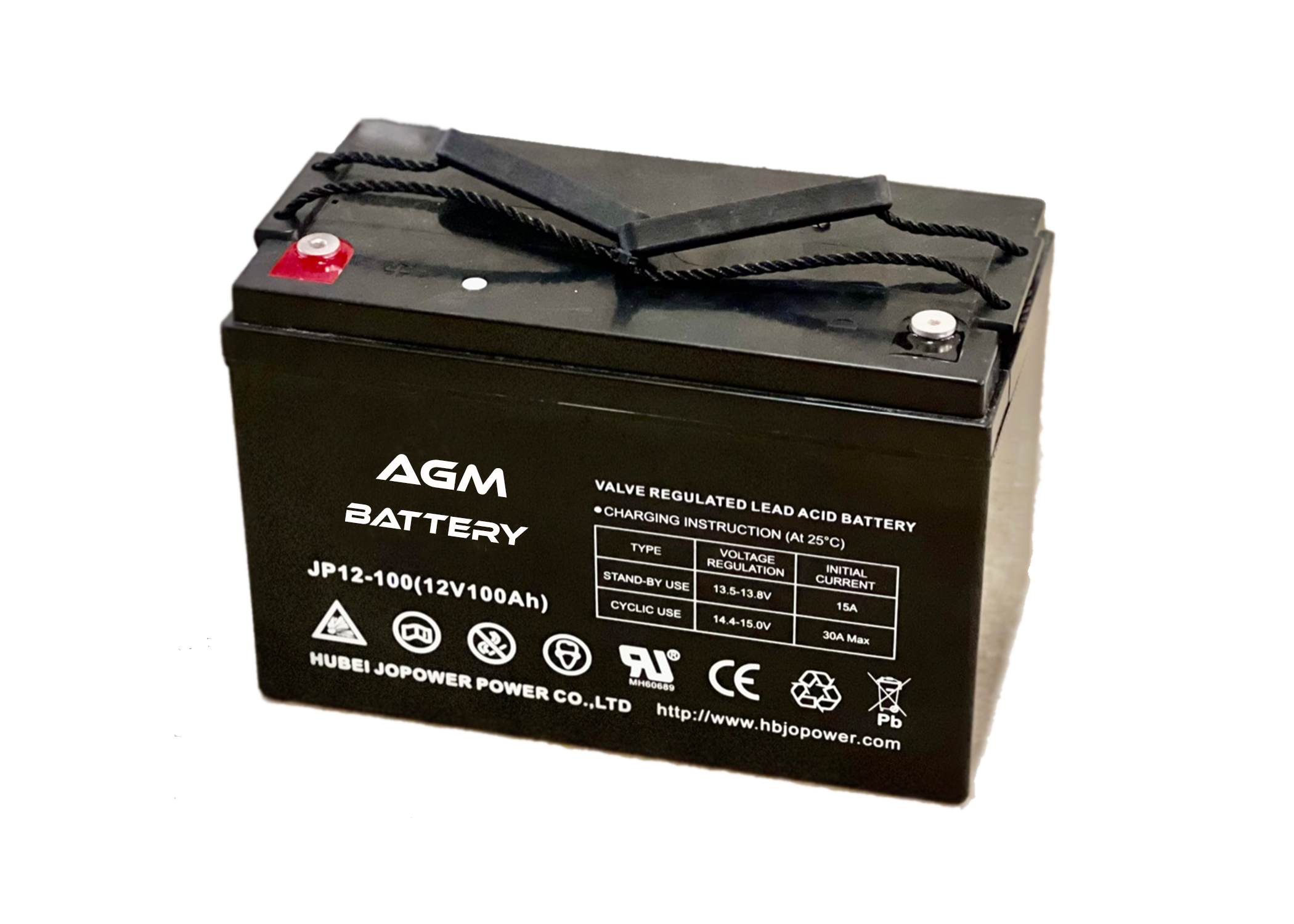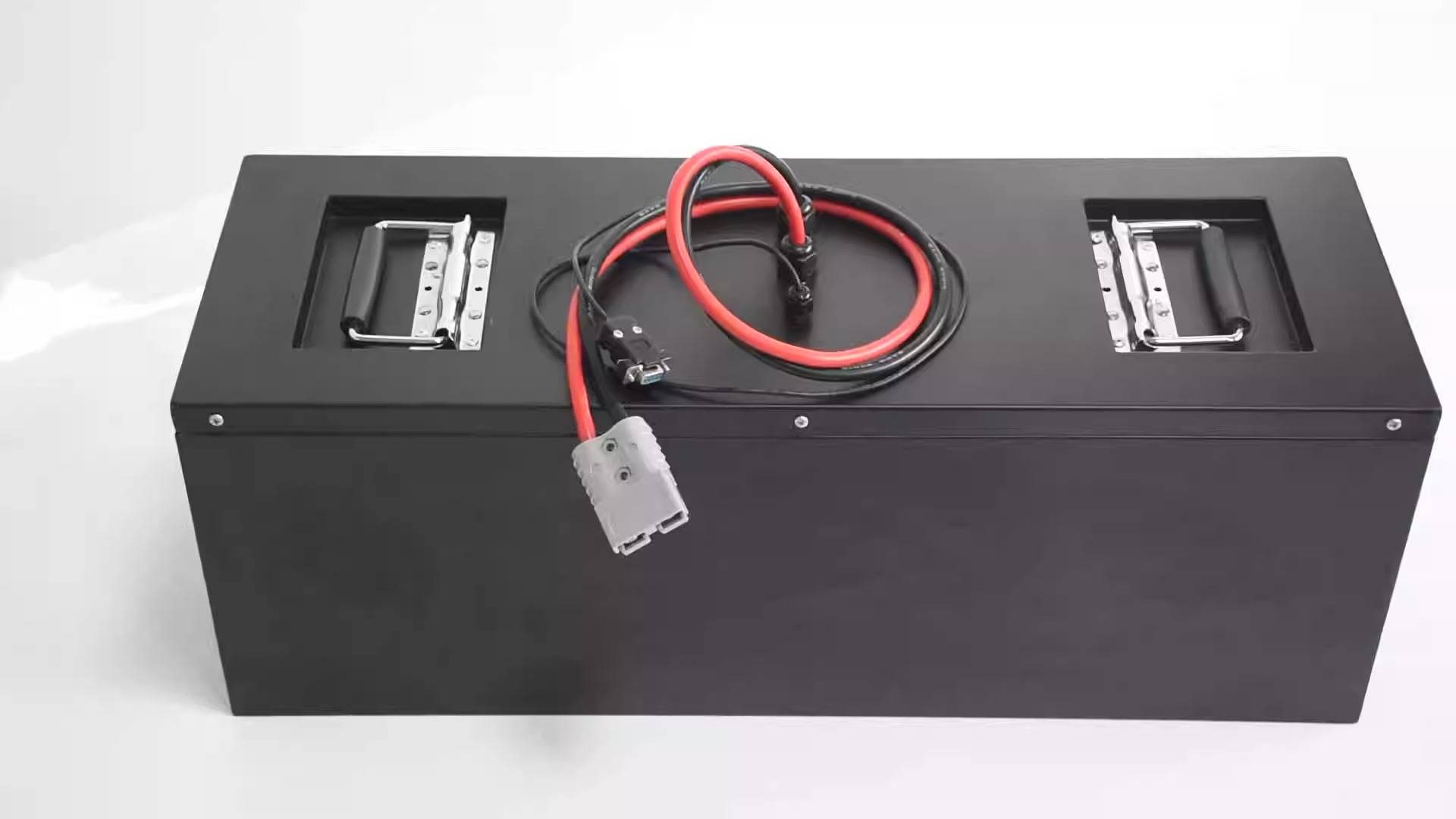-
29 W. Pawnee, Bloomfield, NJ 07003
Group 35 Batteries: Complete 2025 Guide to Types, Specs & Applications
Choosing the right battery can mean the difference between reliable performance and frustrating breakdowns. Group 35 batteries power millions of vehicles worldwide, yet many owners don’t understand what makes these batteries unique or how to select the optimal replacement. Whether you’re facing a dead battery or planning ahead, this comprehensive guide reveals everything about Group 35 batteries—their specifications, applications, strengths, and limitations—empowering you to make an informed decision that saves money and prevents future headaches.
What Does Group 35 Mean on a Battery?
The term “Group 35” refers to a specific battery size classification established by the Battery Council International (BCI). This organization standardizes the dimensions and specifications of batteries, ensuring that consumers can easily find compatible batteries for their vehicles or equipment.
The BCI classification system helps identify batteries based on their physical size, terminal placement, and other key characteristics. This standardization streamlines the purchasing process, making it easier to find replacement batteries that fit perfectly in your vehicle’s battery compartment.
Group 35 Battery Dimensions and Physical Characteristics

Group 35 batteries are considered medium-sized batteries in the automotive world. These batteries typically have the following dimensions:
- Length: 9.06 inches (230mm)
- Width: 6.88 inches (175mm)
- Height: 8.88 inches (225mm)
These standardized dimensions ensure proper fitment in vehicles designed to accommodate Group 35 batteries. However, it’s worth noting that some manufacturers produce Group 35 batteries that are slightly longer than the standard specifications—sometimes up to 9.45 inches in length. While this small difference (less than half an inch) typically doesn’t cause fitment issues in most vehicle battery compartments, it’s always recommended to measure your battery compartment before purchasing a replacement.
The weight of Group 35 batteries varies significantly based on the battery technology used. Traditional lead-acid batteries are the heaviest, typically weighing between 40-49 pounds, while lithium variants can be much lighter, often under 14 pounds.
Types of Group 35 Batteries
Several types of Group 35 batteries are available on the market, each with distinct advantages and disadvantages. Understanding these differences can help you select the most suitable battery for your specific needs.
Flooded Lead-Acid Batteries
Flooded lead-acid batteries are the most traditional type and have been used in vehicles for decades. These batteries contain liquid electrolyte (sulfuric acid) that freely surrounds the lead plates.
Advantages:
- Cost-effective initial purchase
- Reliable performance in moderate conditions
- Widely available
- Recyclable
Disadvantages:
- Require regular maintenance (checking fluid levels, cleaning terminals)
- Shorter lifespan compared to newer technologies
- Can leak if damaged or tipped
- Poor cycle life (typically less than 350 cycles)
- Lower energy density (35-40 Wh/kg)
At VADE Battery, we understand that while these traditional batteries have served the industry well, they’re increasingly being replaced by more advanced technologies that offer better performance and lower maintenance requirements.
AGM (Absorbent Glass Mat) Batteries

AGM batteries represent a significant advancement in lead-acid technology. They feature a special glass mat separator that absorbs the electrolyte, creating a maintenance-free, spill-proof design.
Advantages:
- Maintenance-free operation
- Spill-proof and leak-resistant design
- Better vibration resistance
- Improved cycling capabilities
- Higher charge acceptance rate
- Longer lifespan than flooded lead-acid
- Can be mounted in various positions
Disadvantages:
- Higher initial cost than flooded lead-acid
- Still heavier than lithium alternatives
- Lower cycle life than lithium batteries
AGM batteries have become increasingly popular for modern vehicles with sophisticated electronics and start-stop systems. The NorthStar NSB-AGM35, for example, is a high-performance AGM Group 35 battery featuring 60Ah capacity, 740 CCA (Cold Cranking Amps), and 115 minutes of reserve capacity.
Gel Cell Batteries
Gel cell batteries use a silica gel to immobilize the electrolyte, making them another maintenance-free option within the lead-acid family.
Advantages:
- Excellent deep cycling capabilities
- No maintenance required
- Good performance in high-temperature environments
- Resistant to vibration
- Low self-discharge rate
Disadvantages:
- More expensive than flooded lead-acid and some AGM batteries
- Lower cranking power than equivalent AGM batteries
- Sensitive to overcharging
Lithium-Ion Batteries (LiFePO4)

At VADE Battery, we specialize in lithium-ion technology, particularly lithium iron phosphate (LiFePO4), which represents the cutting edge of battery innovation for Group 35 applications.
Advantages:
- Significantly lighter weight (often 65-75% lighter than lead-acid equivalents)
- Much longer cycle life (2,500-12,000 cycles to 80% capacity)
- Higher energy density
- Faster charging
- Maintenance-free
- Constant voltage throughout discharge cycle
- Better performance in extreme temperatures
- Lower self-discharge rate (2-5% per month)
Disadvantages:
- Higher initial purchase price
- May require specific charging equipment
- Less established in some traditional automotive applications
For example, the Antigravity Group-35 lithium battery weighs just 13.75 pounds while delivering 1500 cranking amps and 40 amp-hours of capacity—performance comparable to a 90Ah lead-acid battery.
Technical Specifications of Group 35 Batteries
Voltage
All Group 35 batteries, regardless of chemistry, provide a nominal 12 volts for automotive and other applications. This standardized voltage ensures compatibility with vehicles and equipment designed for 12V electrical systems.
Some variations exist in the exact voltage specifications:
- Lead-acid batteries (flooded, AGM, gel): 12.6-12.8V when fully charged
- Lithium iron phosphate (LiFePO4): 13.2-13.6V when fully charged
This consistency in nominal voltage makes it possible to replace traditional lead-acid batteries with advanced lithium options without requiring changes to the vehicle’s electrical system.
Capacity
Battery capacity indicates how much electrical energy a battery can store and is typically measured in ampere-hours (Ah). Group 35 batteries generally offer capacity in the following ranges:
- Flooded lead-acid: 42-60 Ah
- AGM: 50-65 Ah
- Lithium-ion: 35-50 Ah (equivalent to higher Ah ratings in lead-acid due to higher usable capacity percentage)
While the nominal Ah rating of lithium batteries might appear lower, they typically provide more usable capacity since they can be safely discharged to lower levels without damage, unlike lead-acid batteries which should rarely be discharged below 50% state of charge.
Cold Cranking Amps (CCA)
Cold Cranking Amps measure a battery’s ability to start an engine in cold temperatures. Group 35 batteries typically provide between 430-850 CCA, depending on the specific model and technology.
Lithium batteries often offer impressive cranking performance despite their lighter weight. For instance, the Antigravity Group-35 lithium battery provides 1500 cranking amps while weighing just 13.75 pounds.
Reserve Capacity (RC)
Reserve capacity measures how long a battery can run essential systems if the alternator fails. Group 35 batteries typically offer between 90-130 minutes of reserve capacity.
Applications for Group 35 Batteries
Group 35 batteries are versatile power sources used in various applications due to their balanced size and performance characteristics.
Automotive Applications
Group 35 batteries are commonly used in many vehicles, including:
- Compact Cars: Honda Civic, Toyota Corolla
- Mid-Sized Sedans: Ford Fusion, Nissan Altima
- Light Trucks: Chevrolet Colorado, GMC Canyon
- Performance Vehicles: Acura NSX, Mitsubishi EVOs, Subaru models
These batteries provide reliable starting power for engines while supporting the electrical demands of modern vehicles, including lights, climate control, entertainment systems, and various electronic components.
Marine Applications
Though not as common as Group 24 or Group 27 batteries in marine applications, Group 35 batteries—particularly AGM and lithium variants—can serve well in smaller boats for starting engines and powering onboard electronics.
Marine environments demand batteries that can withstand vibration, moisture, and occasional rough handling. AGM and lithium Group 35 batteries are especially suitable for these conditions due to their sealed construction and vibration resistance.
RV and Camper Applications
Recreational vehicles often use Group 35 batteries for both starting and house power applications. In these scenarios, dual-purpose AGM batteries or lithium batteries provide the best performance due to their ability to handle both high starting currents and deeper discharge cycles.
Backup Power Systems
Group 35 batteries are suitable for uninterruptible power supply (UPS) systems and backup generators in residential and small commercial applications. Their reliable performance and standardized size make them a practical choice for emergency power solutions.
For critical applications where power interruptions are not an option, lithium Group 35 batteries from VADE Battery provide industry-leading reliability and longevity, maintaining their capacity through hundreds more cycles than traditional batteries.
Pricing and Cost Considerations
The price of Group 35 batteries varies significantly based on technology and brand:
- Flooded lead-acid: $100-$150
- AGM: $150-$250
- Lithium-ion: $350-$850
While lithium batteries have a higher upfront cost, they often provide better value over time due to their longer lifespan, improved performance, and reduced maintenance requirements. Let’s compare the total cost of ownership:
| Battery Type | Initial Cost | Typical Lifespan | Cost Per Year | Maintenance Requirements |
|---|---|---|---|---|
| Flooded Lead-Acid | $100-$150 | 3-5 years | $20-$50 | Regular (every 3-6 months) |
| AGM | $150-$250 | 4-7 years | $21-$63 | Minimal |
| Lithium (LiFePO4) | $350-$850 | 8-12 years | $29-$106 | None |
As shown in the table, while lithium batteries have a higher initial investment, their longer lifespan often results in a similar or lower annual cost compared to traditional batteries. Additionally, the elimination of maintenance costs and the convenience of a maintenance-free battery add further value.
It’s also worth considering that electric vehicle battery prices are projected to fall significantly, with Goldman Sachs forecasting a nearly 50% reduction by 2026. This trend will likely impact the cost of lithium batteries across all applications, including Group 35 batteries, making these advanced technologies increasingly accessible.
How to Choose the Right Group 35 Battery
Selecting the optimal Group 35 battery depends on various factors:
For Standard Automotive Use
If you need a reliable, cost-effective option for a standard vehicle with minimal electrical accessories, a quality flooded lead-acid battery may be sufficient. However, for most modern vehicles, an AGM battery offers better value due to its maintenance-free operation and improved performance with start-stop systems and modern electronics.
For High-Performance Vehicles
Vehicles with demanding electrical systems or performance applications benefit from either high-end AGM batteries or lithium batteries. These provide stronger cranking power, faster recovery, and better support for accessories. Performance vehicles like the Acura NSX, Mitsubishi EVOs, and Subaru models often use Group 35 batteries.
For Marine and RV Applications
For boats and RVs, prioritize batteries with excellent vibration resistance and deep cycling capability. AGM or lithium batteries are ideal due to their sealed, maintenance-free design and ability to handle the demands of both starting engines and powering accessories for extended periods.
For Extreme Climate Conditions
In very cold regions, choose batteries with high CCA ratings. AGM batteries typically perform well in cold weather, while lithium batteries from VADE Battery are engineered to deliver exceptional cold-weather performance despite common misconceptions about lithium technology.
For hot climates, consider gel cell or lithium batteries, which generally handle high temperatures better than standard flooded batteries.
For Weight-Sensitive Applications
If weight is a crucial factor—such as in performance vehicles, racing applications, or specialized equipment—lithium batteries offer unmatched advantages, weighing 65-75% less than their lead-acid counterparts while delivering equivalent or superior performance.
Technology Trends and Future Outlook
The battery industry is experiencing rapid technological advancement, particularly in the electric vehicle sector, which is driving innovations across all battery applications.
Advancements in Lithium Technology
Lithium battery technology continues to evolve, with improvements in energy density, power delivery, safety features, and cost-effectiveness. The LiFePO4 chemistry used in VADE Battery products offers exceptional safety and longevity compared to earlier lithium chemistries, with cycle durability of 2,500-12,000 cycles to 80% capacity.
Smart Battery Features
Modern Group 35 batteries increasingly incorporate smart features such as built-in battery management systems, Bluetooth connectivity for monitoring battery status, and even wireless jump-starting capability as seen in Antigravity’s RE-START line. These innovations enhance user experience and battery reliability.
Price Trends
As manufacturing scales up and technology matures, lithium battery prices continue to fall. Goldman Sachs forecasts that EV battery prices could drop by almost 50% by 2026. This trend will likely impact the entire lithium battery market, making advanced Group 35 lithium batteries more affordable for everyday applications.
Government Initiatives
Government policies are increasingly supporting battery manufacturing and development. For instance, the 2025 Indian Union Budget announced the addition of 35 capital goods to the list of materials exempted from Basic Custom Duty to support electric vehicle battery production. Similar initiatives worldwide are likely to accelerate battery technology advancement and cost reduction.
Conclusion
Group 35 batteries serve as the silent workhorses behind millions of vehicles and equipment worldwide. As we’ve explored, these versatile power solutions come in various technologies—from traditional flooded lead-acid to cutting-edge lithium—each offering distinct advantages for different applications and budgets.
When selecting your next Group 35 battery, consider your specific needs: Will you primarily use it for basic transportation with minimal electrical demands? Do you need exceptional cold-weather starting performance? Or are you looking for maximum lifespan and reduced maintenance? Matching these requirements with the appropriate battery technology ensures optimal performance and value.
Modern advancements in battery technology continue to improve reliability, lifespan, and environmental impact across all price points. Whether you choose the economical reliability of traditional lead-acid models, the balanced performance of AGM technology, or the premium capabilities of lithium batteries, today’s Group 35 options offer better performance than ever before.
By applying the knowledge from this guide, you can confidently select a Group 35 battery that delivers the perfect balance of performance, longevity, and value for your specific application.

